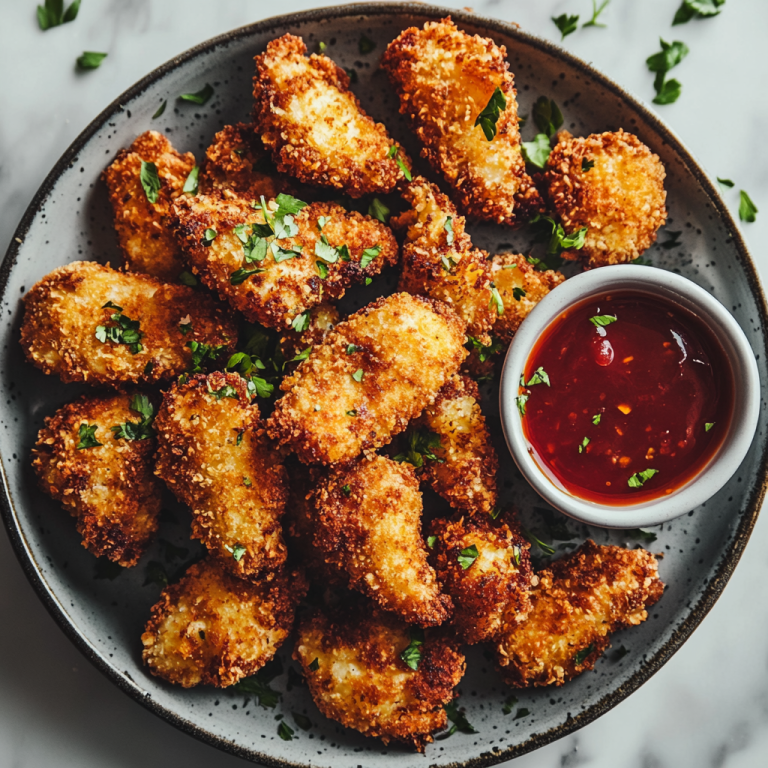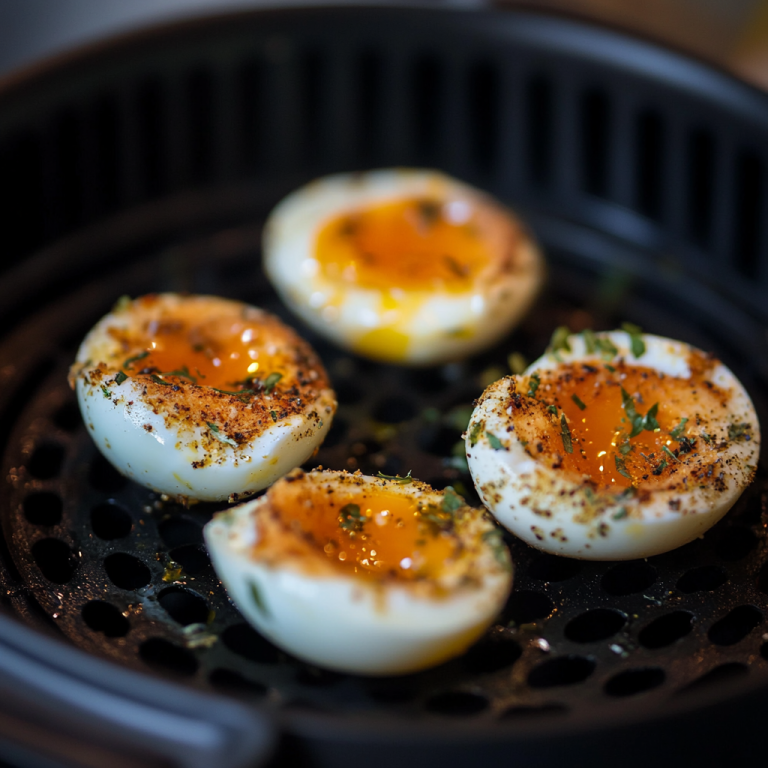Air Fryer Temperature For Vegetables: Quick Cooking Guide
Air fryers have quickly become kitchen favourites, offering a healthier way to enjoy crispy, flavourful vegetables without the excess oil. Understanding how to effectively use an air fryer can elevate your cooking, making veggies not just nutritious but also delicious. This article explores the benefits of air frying, optimal temperatures for different vegetables, tips for perfect cooking, and common pitfalls to avoid. Whether you’re a novice or a seasoned chef, you will discover how to maximise the potential of your air fryer for vibrant, tasty meals.
What is an Air Fryer and How Does it Work?
An air fryer is a widely used kitchen appliance that employs convection heat distribution to achieve a crisp texture in food, thereby serving as a versatile tool for healthy cooking. By continuously circulating hot air around the food, this appliance not only reduces cooking times but also ensures uniform cooking, effectively eliminating the risk of sogginess. The advantages of convection heat are particularly evident in its capacity to enhance the flavour profiles of a variety of ingredients, ranging from vegetables to meats, as the rapid air movement facilitates deeper browning and caramelisation. Air fryers are capable of producing an appealing crispy exterior while maintaining moisture and tenderness within the food, making them suitable for preparing a range of dishes, from golden chips to exquisite baked goods. This multifaceted cooking method encourages the exploration of diverse recipes, fostering creative culinary experiences for chefs of all levels.
Benefits of Air Frying Vegetables
Air frying vegetables provides several health benefits, including reduced fat content and improved nutrient preservation, making it a favoured cooking method among health-conscious individuals. By utilising less oil than traditional frying techniques, air frying promotes healthier eating while also preserving the vibrant colours and flavours of fresh vegetables. This method ensures even cooking and maximises the nutritional value of meal preparation.
Nutritional Advantages and Taste
The nutritional benefits of air frying extend beyond mere fat reduction; this cooking technique significantly enhances the flavour profiles of various vegetables, contributing to an enjoyable dining experience. By employing optimal cooking practices, such as preheating the air fryer and accurately adjusting cooking times, one can achieve a crispy texture that retains moisture while maximising the nutritional value of meals. Vegetables such as sweet potatoes, broccoli, and bell peppers particularly excel with this method. Among the vegetables that perform exceptionally well, Brussels sprouts stand out by developing a rich, caramelised exterior while preserving their vitamin C content. Courgette, when air-fried, may lose some water-soluble nutrients but acquires an appealing texture that lends itself well to seasoning. For cauliflower, air frying enhances its natural sweetness, making it an ideal base for spices or marinades. To further elevate these flavours, it is advisable to consider marinating the vegetables in advance with olive oil, garlic, or herbs, as this can enhance taste without compromising nutritional integrity. Experimenting with a variety of seasonings can lead to exciting new flavour experiences, ensuring that each bite remains enjoyable and satisfying.
Optimal Temperature for Air Frying Vegetables
Determining the optimal temperature for air frying vegetables is essential for achieving the desired texture and flavour in culinary preparations. Cooking temperatures may vary depending on the type of vegetable, necessitating adjustments in settings to prevent overcooking or undercooking. For example, sweet potatoes and Brussels sprouts typically require different temperature ranges to ensure consistent and appropriate cooking outcomes. Therefore, careful time adjustment is a critical aspect of the air frying process.
Factors That Affect Temperature
Several factors can influence the cooking temperature of vegetables in an air fryer, including cooking time, types of food, and the dynamics of air circulation within the air frying basket. Efficient air circulation is crucial for achieving even cooking, while moisture retention significantly impacts the texture of the vegetables. Understanding these factors is essential for attaining optimal cooking results and enhancing flavour profiles. For example, denser vegetables such as carrots typically require longer cooking times and higher temperatures compared to lighter options like bell peppers. Additionally, the type of food affects moisture retention; starchy vegetables often necessitate careful monitoring to avoid becoming overly dry. By regularly checking and adjusting settings, one can facilitate even cooking and prevent inconsistencies in texture. Ensuring adequate spacing in the basket greatly enhances airflow, resulting in a more uniform cooking environment. Monitoring both time and temperature adjustments is vital for an efficient air frying process and, ultimately, a pleasing meal.
Cuisinart Food Processor, Mini-Prep 3 Cup, 24 oz, Brushed Chrome and Nickel, DLC-2ABC
$19.22 (as of 21:24 GMT +00:00 - More info)How to Determine the Right Temperature for Different Vegetables
Determining the appropriate temperature for various vegetables necessitates consulting a comprehensive cooking guide that specifies temperature ranges tailored to each vegetable type. For instance, asparagus may require a lower temperature range, whereas bell peppers might necessitate a slightly higher setting. By meticulously planning your meals and considering variations in recipes, one can achieve optimal cooking results for all vegetables involved.
Recommended Temperatures for Popular Vegetables
For optimal results when air frying, it is essential to be aware of the recommended temperatures for popular vegetables such as broccoli, courgette, and Brussels sprouts. For example, cooking broccoli at approximately 190 C ensures a crispy yet tender texture, while courgette is best prepared at 200 C to maximise flavour infusion. Adhering to these recommended temperatures promotes cooking consistency and enhances the overall flavour experience. Brussels sprouts yield the best results when cooked at 193 C, allowing their natural sugars to caramelise effectively. To create a vibrant vegetable medley, one may consider incorporating these vegetables along with carrots and bell peppers. A light coating of olive oil, salt, and pepper serves as an excellent foundation. For those wishing to elevate the dish, additional seasonings such as garlic powder, smoked paprika, or a sprinkle of Parmesan can impart an irresistible depth of flavour. Furthermore, experimenting with herbs such as thyme or rosemary can complement the earthiness of the vegetables, transforming a simple medley into an extraordinary side dish.
Tips for Cooking Vegetables in an Air Fryer
Cooking vegetables in an air fryer is an efficient and convenient method, particularly when employing appropriate cooking tips and techniques. Preparing fresh vegetables takes minimal time, facilitating the creation of quick meals without compromising on flavour or nutritional value. By mastering various culinary techniques and emphasising kitchen efficiency, individuals can optimise their meal preparation process while enjoying delicious and healthful dishes.
Preparation and Cooking Techniques
Effective preparation and cooking techniques are essential for mastering the art of air frying vegetables, beginning with the crucial step of preheating the air fryer. This practice ensures even cooking, which enhances the overall flavour of the dishes. Experimentation with food pairings, seasoning, and marinating can significantly elevate the taste of vegetables, resulting in a more enjoyable dining experience. Preheating is vital, as it establishes the conditions necessary for achieving a crispy texture while preserving nutrients, thus creating the desirable caramelised layer that vegetables require. Pairing specific vegetables with complementary flavours can transform an ordinary dish into an extraordinary one; for instance, carrots complement thyme and honey exceptionally well, while courgettes harmonise beautifully with garlic and lemon. Furthermore, techniques such as marinating can enhance the inherent sweetness of peppers or the earthy notes found in aubergine. A simple marinade composed of olive oil, balsamic vinegar, and herbs can yield remarkable results, allowing the vegetables to absorb flavours deeply and making each bite a delightful sensory experience.
Common Mistakes to Avoid When Air Frying Vegetables
Identifying common mistakes when air frying vegetables is essential for ensuring food safety and achieving the desired cooking consistency. Overcooking or undercooking vegetables can result in undesirable textures and compromised flavours, making it imperative to monitor cooking times closely. By avoiding these pitfalls, one can enhance the culinary experience and ensure that dishes are both palatable and safe for consumption.
How to Prevent Overcooking or Undercooking
Preventing the overcooking or undercooking of vegetables in an air fryer necessitates meticulous attention to cooking temperature and time adjustments based on portion control. By understanding the cooking efficiency of the specific air fryer being used and actively monitoring the cooking process, one can achieve an optimal balance that ensures the best texture and flavour for each type of vegetable. Properly gauging portion sizes is also critical to this endeavour. It is important to recognise that denser vegetables, such as carrots or potatoes, typically require longer cooking times than more delicate options like asparagus or spinach. Using a food thermometer can assist in achieving precise cooking temperatures, which can vary significantly depending on the model of the air fryer. Emphasising the preparation of small batches facilitates more uniform cooking, ensuring that each piece receives adequate airflow and heat exposure. Additionally, stirring or shaking the basket halfway through the cooking process can promote even cooking. Monitoring the cooking time closely and checking for the desired level of doneness can further prevent mishaps, allowing for the consistent enjoyment of perfectly cooked vegetables.









